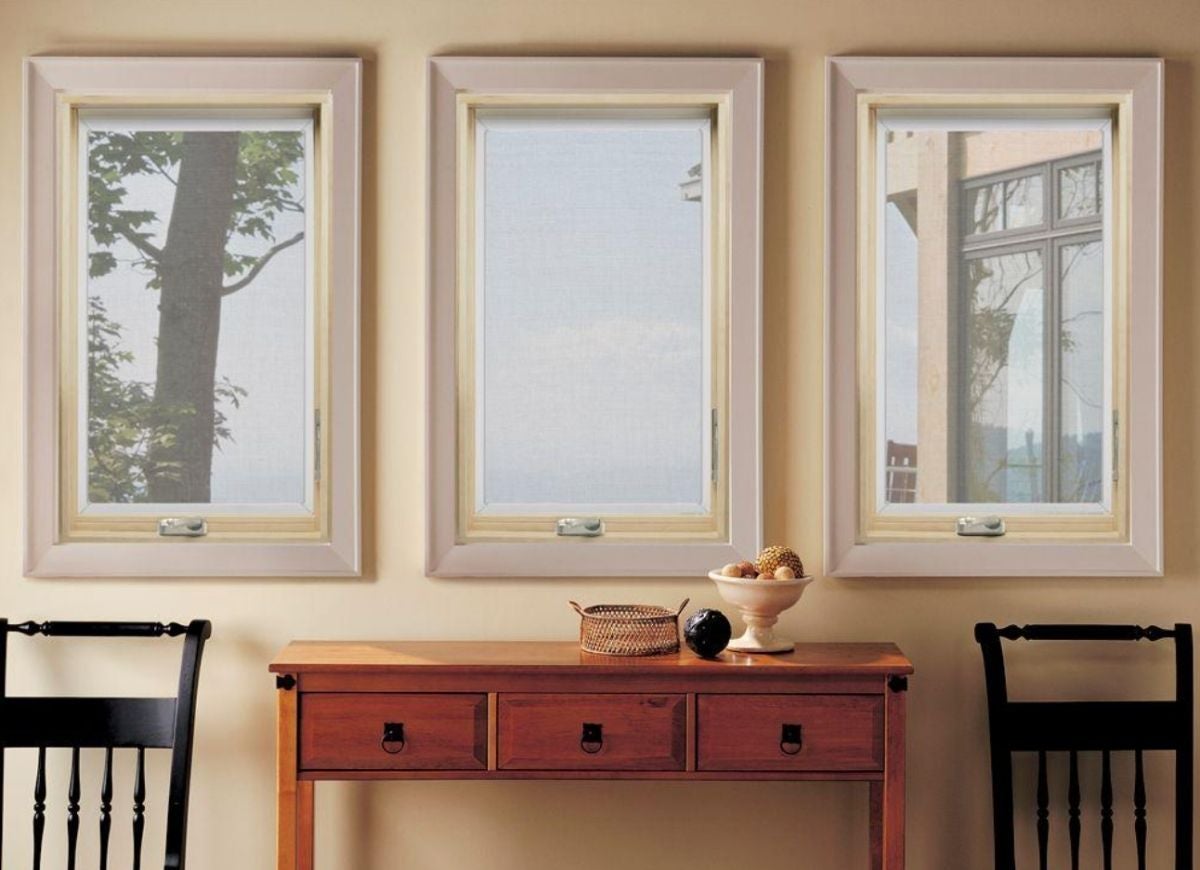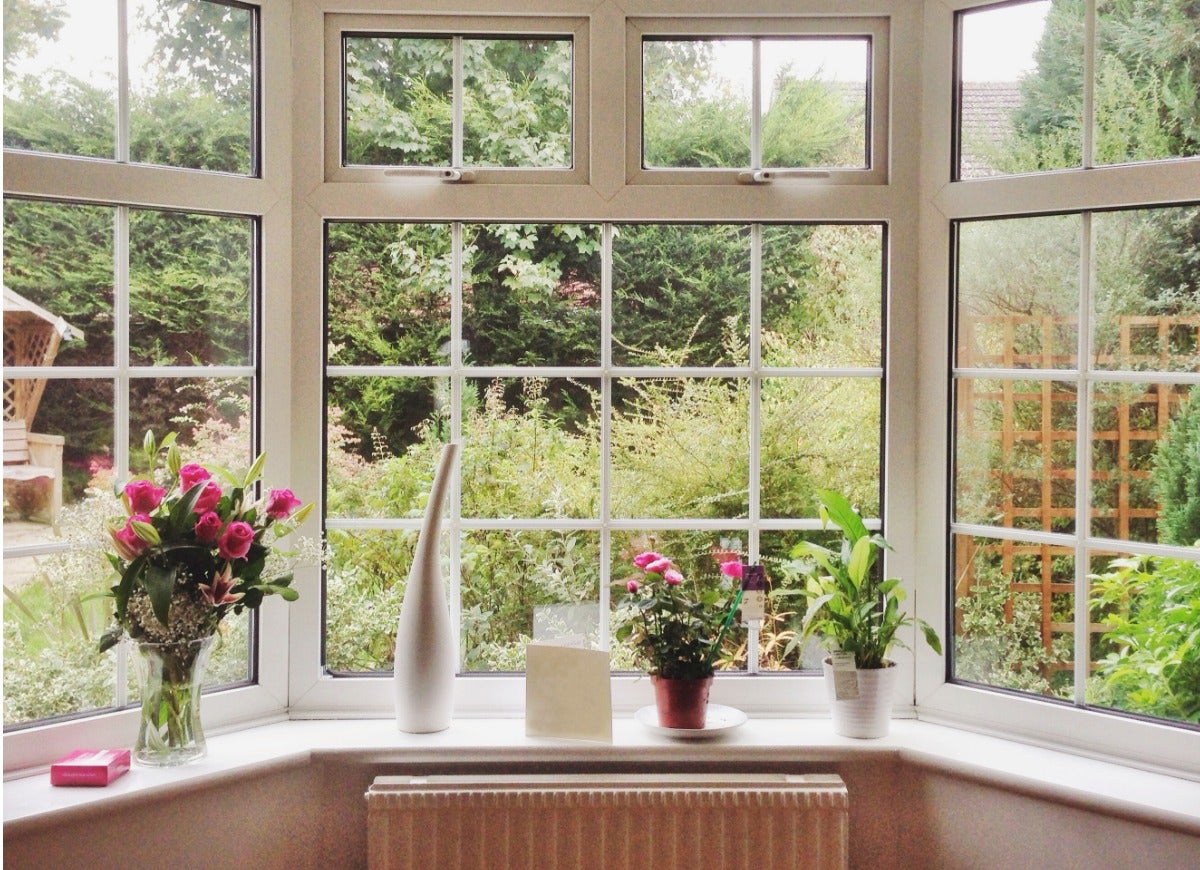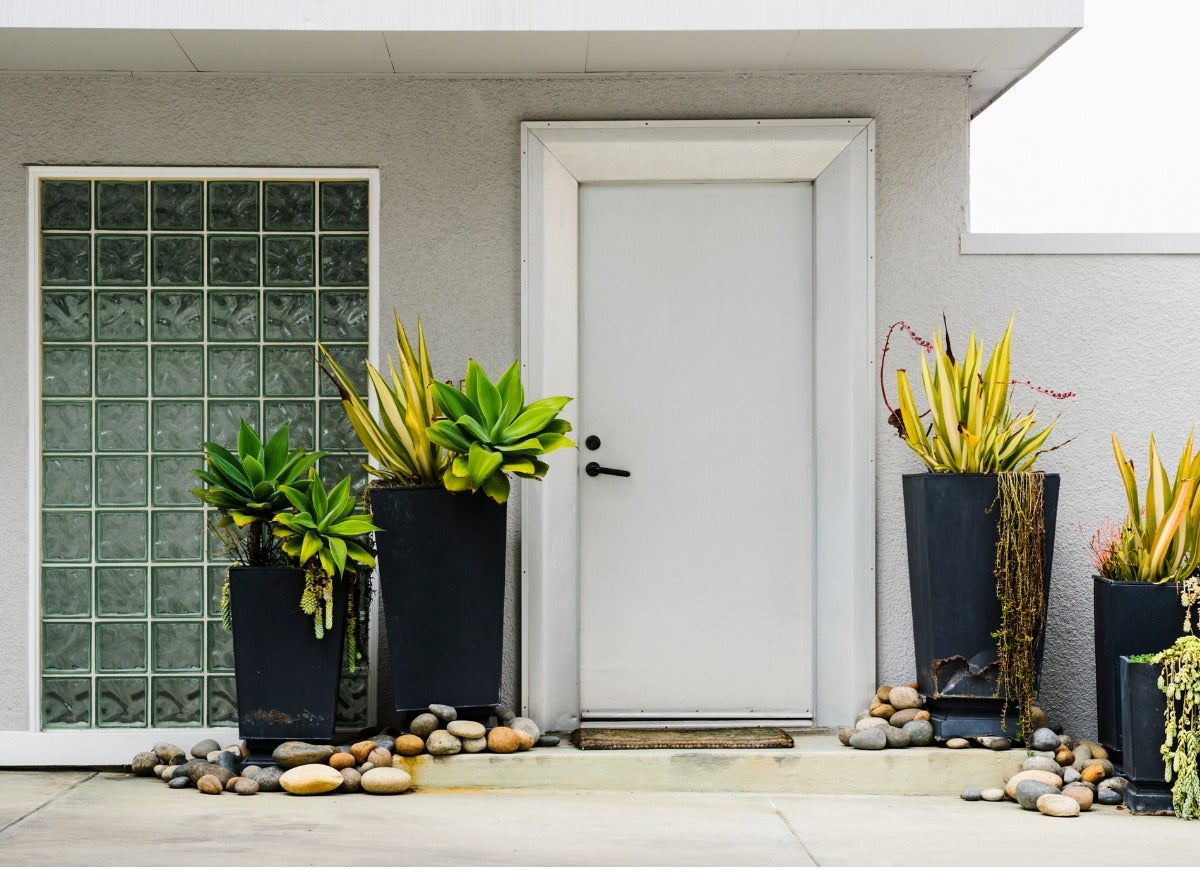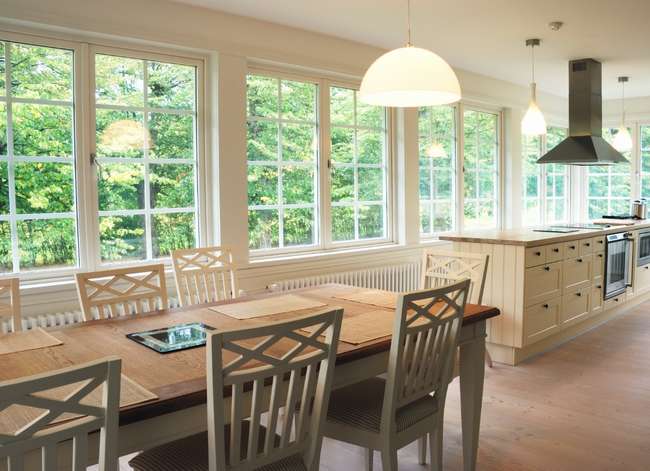We may earn revenue from the products available on this page and participate in affiliate programs. Learn More ›
Window Designs for the Modern Home

Whether you are renovating an existing room or planning an extension for the home, window design is an important consideration—the types and sizes of windows in a space can utterly transform it. When it comes time to decide between the different types of windows and window designs, however, appearance and style should not be your only considerations. Think, too, about their energy efficiency, ventilation, and safety factors, which can all impact whether a window style is right for your home.
Keep reading to learn window styles names and the types of windows for home renovation projects that accentuate the exterior or interior style of a home.
Single-Sash Window

The sash window type consists of two panels arranged vertically. This type of window is attributed to the English inventor Robert Hooke, and its use caught on quickly due to the design’s simplicity. In the single hung sash, the bottom panel moves up to allow the flow of air, while the top panel stays fixed.
Best for: Commonly installed in bathrooms and smaller bedrooms to provide airflow and ventilation for these rooms. Single sash windows are also more affordable than double-hung windows, making them a good choice for DIY projects with a small budget.
Double-Hung Window

The double panel sash window is probably the most widely used of all types of windows. It consists of two vertically arranged panels, both of which can be moved all the way up and down.
Best for: Better for ventilation than a single sash window, double-hung windows are great for bathrooms and bedrooms. Homeowners with kids or pets can also keep the lower panel locked while allowing air in through the top panel.
Casement Window

The casement window was popular in the UK before the invention of the sash window, and it is still popular in many European countries. In this design, the operable panel (installed singly or in a series) hangs on a hinge that enables the window to be opened like a door.
Best for: Casement windows are regularly installed above doorways, in stairwells, and in other hard-to-reach locations because the crank is relatively easy to operate with just one hand, even when the user’s arm is fully extended to reach the crank.
Awning Window

The awning window is a casement that’s mounted vertically, with the hinge at the top so the window pushes out. These types of windows are especially useful for allowing air to flow without allowing seasonal debris (e.g., falling leaves) or rainfall into the home.
Best for: Like casement windows, awning windows operate with a crank mechanism that is easy to use, even when reaching above your head. For this reason, casement windows are best used above doorways, in stairwells, and in narrow spaces that may be hard to access.
Bay Window

Since their use in castles during the English Renaissance, bay windows have come a long way. Today—in mansions and modest homes alike—bay windows are beloved because they allow for sweeping views of lawns and gardens outside, and allow sunlight inside the home as the sun moves across the sky over the course of a day.
Best for: Allow tons of natural sunlight to flood in through a wide bay window in the kitchen or living room. The angled side windows typically open, improving ventilation in the space.
Bow Window

The bow window depends on a curved architecture and uses more glass panels than a bay window does (to account for the curvature). The window pictured is from the Hôtel Otlet in Brussels, Belgium.
Best for: If your goal is to have an impressive view of the yard or neighborhood outside the home, bow windows are a good option. They tend to be a bit more expensive than bay windows, but typically allow more natural light into the home.
Jalousie Window

The jalousie window was invented by Joseph W. Walker of Massachusetts in 1900, and it’s a distinctly American style. These types of windows consist of thin, staggered strips of glass that open and close together like a Venetian blind.
Best for: Popular in warmer cities and coastal regions, install Jalousie windows in the kitchen, dining room, or anywhere else you want easy access to a nice breeze on a hot day.
Palladian Window

The Palladian window is derived from the work of exalted Renaissance architect Andrea Palladio. The Palladian design is usually a large panel embellished by an arched top and two smaller side panels.
Best for: The purpose of a Palladian window is to draw attention—it’s meant to be a main focal point in the home. Install a Palladian window in a living room, dining room, or a lavish office for the best effect.
Sliding Sash Window

The sliding sash window consists of two horizontally mounted sashes that open and close easily by sliding along on a track. Sliders are an excellent choice of window to mount over a counter or sink, or in any circumstance where there is an obstacle blocking access to the window.
Best for: Sliding sash windows are ideal for kitchens and bedrooms, especially in homes with children or pets, because they’re easy to open and close—and clean.
Fixed Window

Fixed windows do not open; they can either be located on exterior walls to admit natural light or set into interior walls (e.g., over a door). These types of windows come in all shapes and sizes, and of course, custom options are also available.
Best for: Rooms in which you would like lots of natural sunlight and a great view of the outdoors, but where you do not want to reduce the energy efficiency of the home by installing a window that opens.
Glass Block Window

One of the more decorative types of windows, glass block windows are made up of several sections of thick glass blocks that allow natural light to pass through into a room but are not fully transparent. These glass blocks are commonly frosted or have a patterned design that adds a decorative element to a space. Glass block windows cannot be opened for ventilation.
Best for: Glass block windows are typically used in spaces where privacy is key: in bathrooms, for example, as well as in basement apartments and around front doors.
Picture Window

Picture windows are designed to be as simple as possible—the idea here is for nothing to detract from the view through the window. Some picture windows, particularly very large ones, may have inset metal grids, which are both decorative and help reduce the risk of breakage. These windows do not open, so they aren’t a good choice for ventilation.
Best for: A picture window is ideal for emphasizing mountains, lakes, oceans, and other stunning views that can be seen from the home.
Skylight Window

One of the more well-known window styles is a skylight window. This window is installed in the ceiling instead of in the wall, allowing the home to have the full effects of an open sky, without the risk of rain or snow falling into the house. Skylight windows can either be fixed, meaning that they don’t open, or they may have a crank mechanism or remote control to operate the window.
Best for: Skylight windows are a great choice for adding natural light to small rooms without taking up wall space. They are also commonly installed in high front hallways or foyers to improve the lighting at a home’s entrance
Storm Window

Storm windows are a specialized type of window that prioritizes function over appearance. As the name indicates, storm windows are designed for withstanding powerful wind, blowing rain, sleet, hail, ice, and snow. They can be installed on either the interior or exterior side of an existing window pane, and provide an additional layer of protection without obstructing the view.
Best for: Set up storm windows in the existing window frames to help keep a home protected in severe storms. For this reason, they are best for areas prone to heavy storms, tornados, or hurricanes.

Everything You Need for a Lush and Healthy Lawn
Keeping your grass green and your plants thriving doesn’t just take a green thumb—it starts with the right tools and supplies.

